AR, VR and Art: an historical perspective
Keynote presented at Laval Virtual VRIC 2015
by Pierre Berger, diccan.com
- A first version of this presentation, titled "Real, virtual, augmented... a continuum" and set like a conference communication, is online. You will find there the main academic references.
- This presentation included a second part, which I could not present due to lack of time. Read here this complement about creation processes,
- This web page contains a few additions to the live presentation, and a second part (new creation processes), which could'nt be show in Laval, for lack of time.
- Diccan includes a general history of digital art.
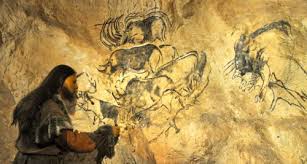
That's the kind of cave that our ancestors "augmented" some 30 000 years ago. Grotte Chauvet at Pont-d'Arc. It was deeply immersive :-), with movements played with torches and shadows, and if not music, at least some kind of sounds.
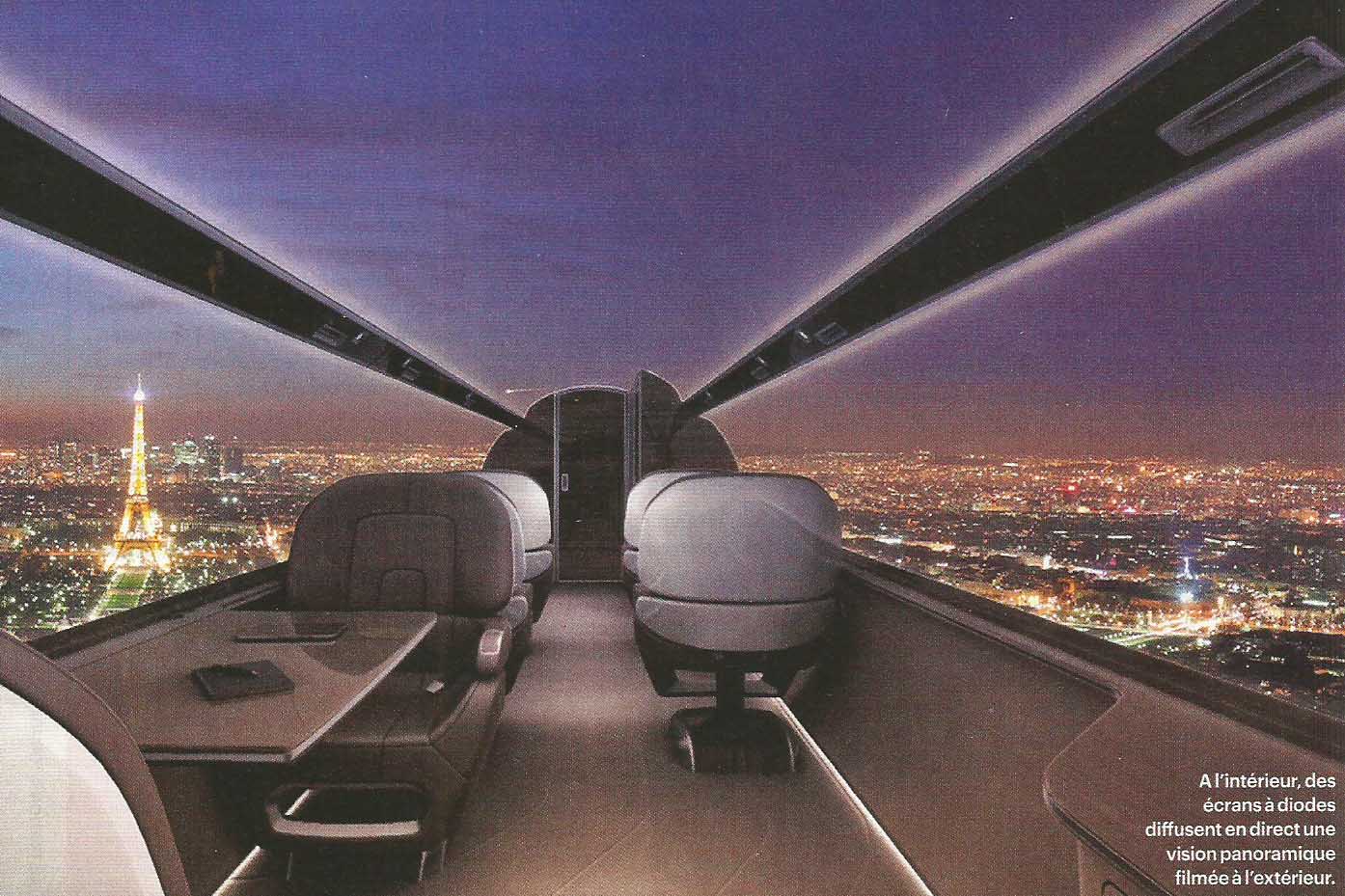
And that is the kind of cave where we will travel by something like 2035 if not earlier. The project of plane (Ixion) has no windows. For ecology, economy and safety, the windows are replaced by screens.
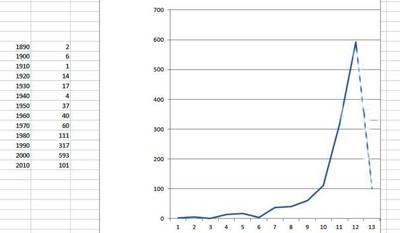
Between these two points, the perspective is ... exponential, of course. Here we present the evolution of digital artists in number, as presented in diccan. The curve, approximately, shows a doubling of the number of artists each decade. The figure for the 2010 decade is of course incomplete. But we feel that there are not so many new artists in the field, if we keep the definition of "digital artist" as: artist who consider the computer (and algorithms) as more than a tool.
Let's start from the roots
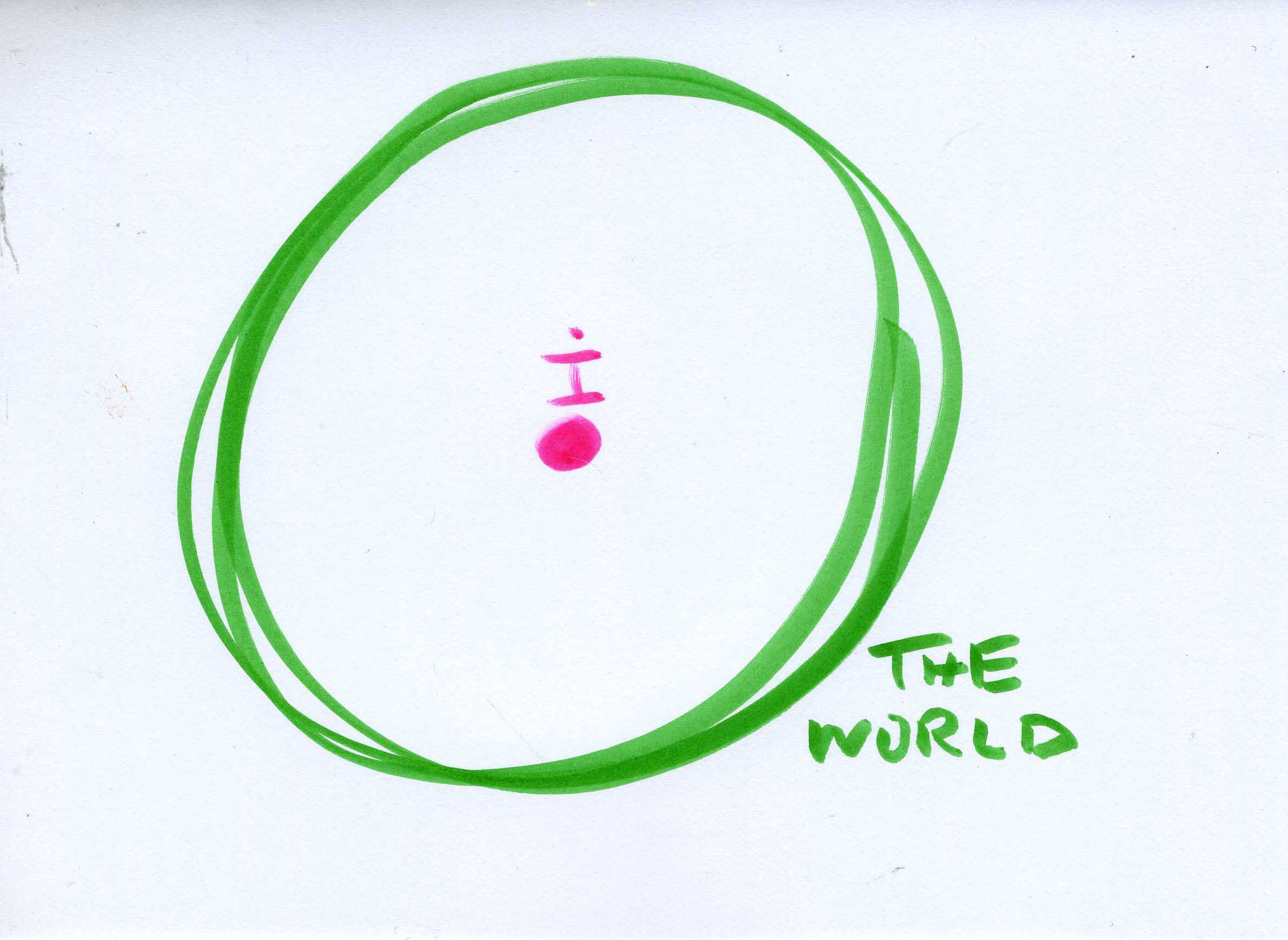
From a philosophical standpoint: In the beginning was the World, and I in the center, looking and listening directly at it.
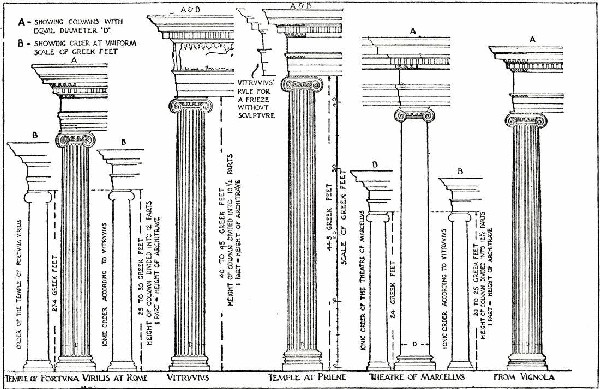
But the bare world in itself is dangerous and boring. Then we organize it. For instance with painting but also with "orders", like the classical Greek triad (Doric, Ionic, Corinthian), shown here by a illustration of Vitruvius (Roman architect, 1st century PE).
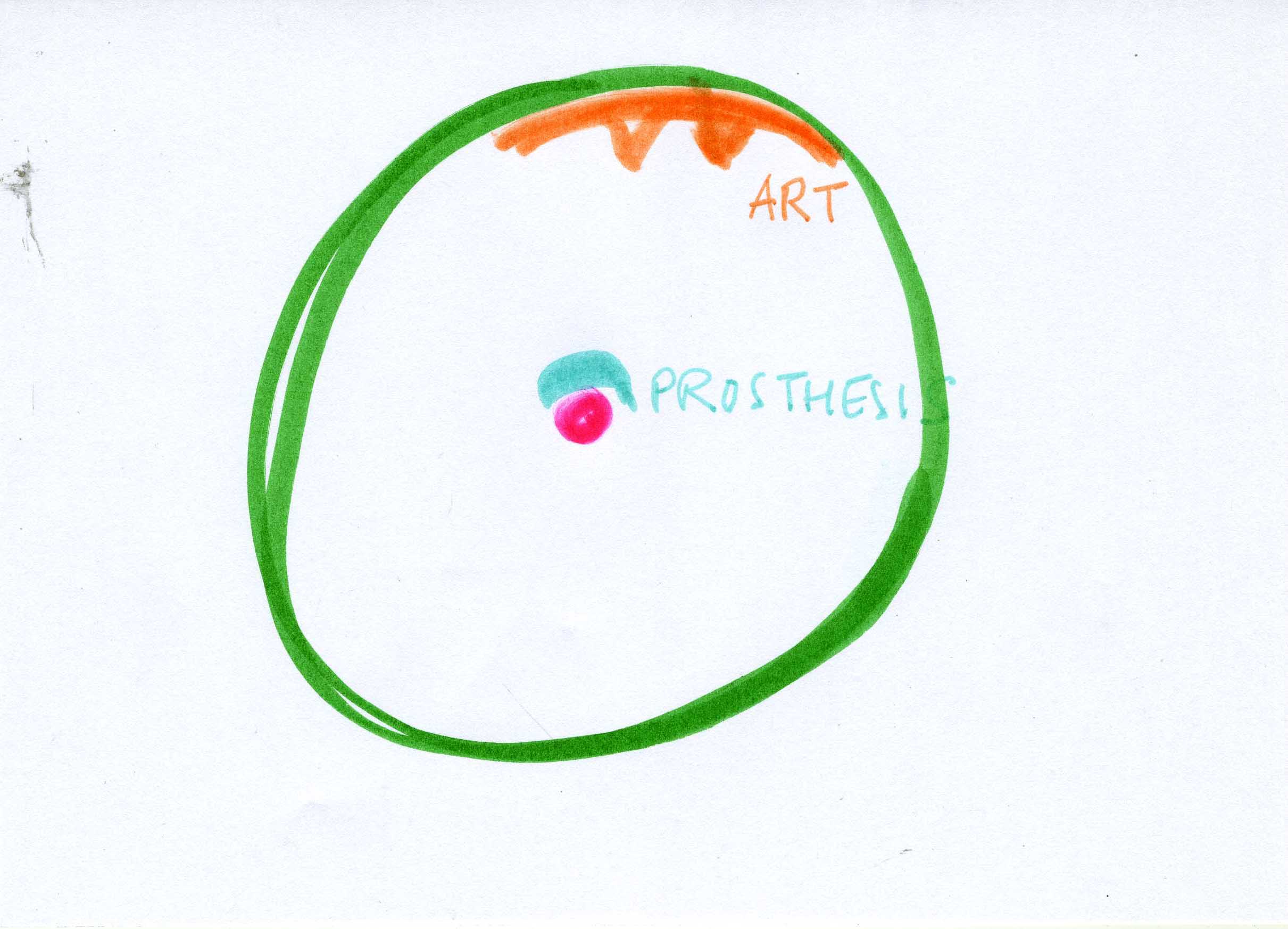
We organize the world. Artists are painters, sculptors, architects. And we organize our perception, with both material prostheses (glasses) and cultural frames.
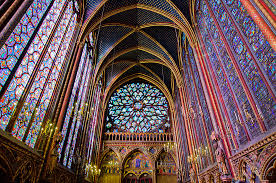
The medieval cathedral is a fully immersive work. At the Sainte-Chapelle (Paris), the ground itself took part in the show: built of white marble, it reflected the colored lights provided by the stained glass windows, and their variations according to the time in the day, meteorologica conditions ans seasons of the year. It's builder, king Louis IX, considred it as a effective image of the Paradise, and so much so due to the presence of the holy Crown of Spines supposedly born by Jesus.
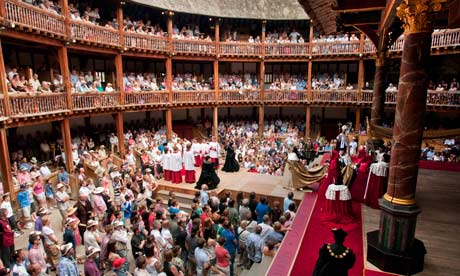
Shakespeare's "The globe" theater was inaugurated in 1599 (rebuilt in 1996), and called "The Globe", a powerful anticipation of immersive cinema! And there were "special effects" with theater machinery.
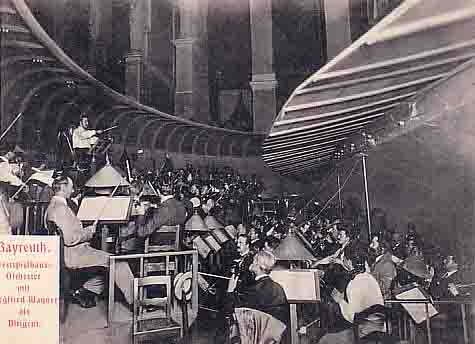
The Bayreuth Theatrer, built for Richard Wagne r(inaugurated in 1876), illustrates an integrated artistic environment. For instance, the orchestra is placed under the scene, so that the public attention be concentrated on the stage. In this period, large immersivve environments in "panoramas".
Electricity brings light and movement
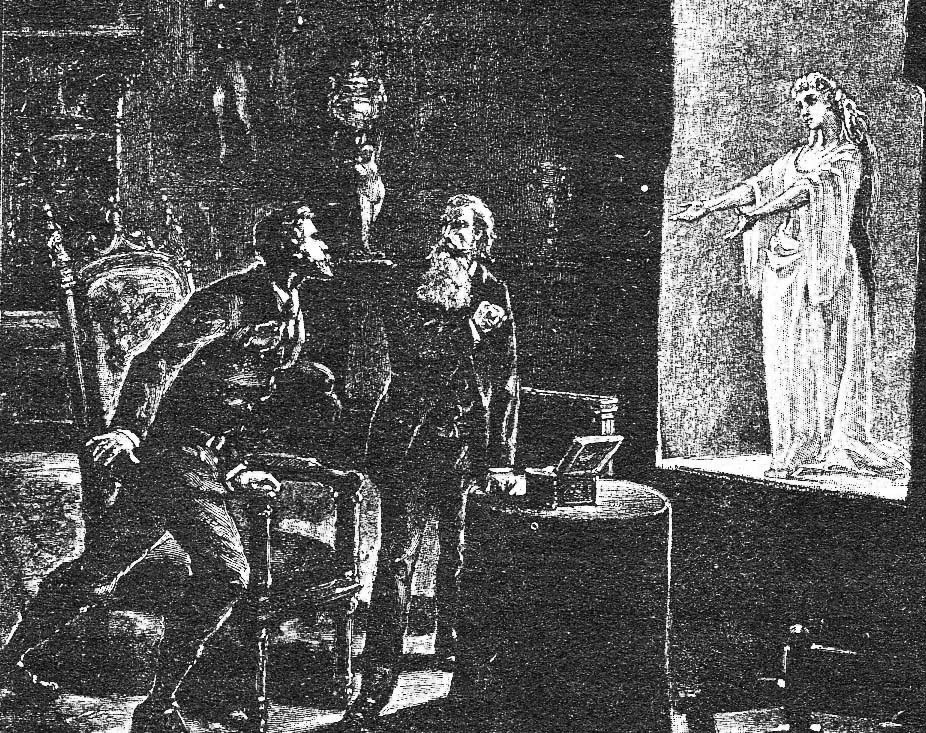
Electricity brings new skylines to imaginations begin to run. Jules Verne presents 3D realistic video (in Le Château des Carpathes, 1892). But his views on new media are mostly developed in a novel The Day of an American Journalist in 2889, published in the American magazine 1889. Multimedia, worlwide (and interplanetary) communication by optical ways, integrated management information systems, domotics, serial music composing... this dense and short (35 000 signs) novel merits to be read. Find here online its integral text, plus the illustrations of the French version.
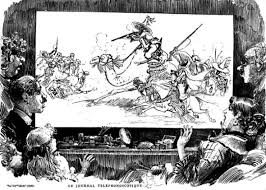
Albert Robida (Le vingtième siècle, 1894), develops the theme of television broadcast. Televisision has still half a century to wait before beginning actually possible.
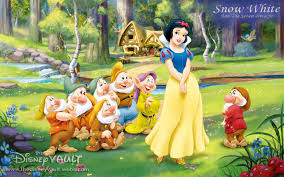
Then cinema makes rapid progress, acquiring sound, color, and animation. With the artificial worlds of Méliès, then the animation cinema, with for instance Walt Disney's Snowwhite (1934). Note that the cinema hall is a kind of cave, but the least interactive of all. You cannot even clap or whistle.
In 1947 the bit was born
Up to the 1940's, the machines were "analogous". There was always some similarity between their structure and their operations. Quite suddenly that changes.
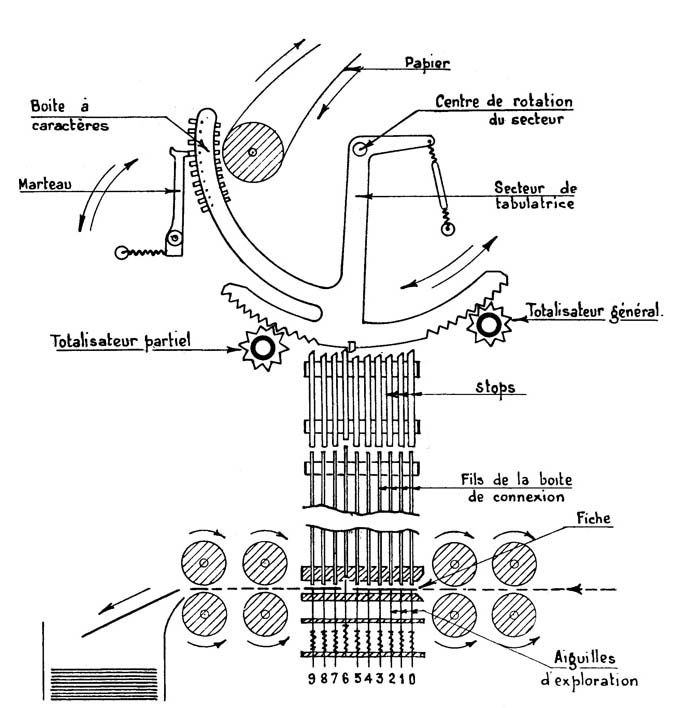
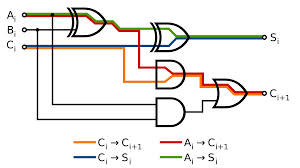
The end of the 1940's see a major break. Not directly visible in the world of art, but with long term dramatic consequenes. In 1947 is created the word "bit". Materially, it is a transition from mechanics to electronics. But conceptually, it is a major break, analogic to digital. Von Neumann (and al.) write:
“We feel strongly in favor of the binary system”, for three reasons :
- hardware implementation (accuracy, costs),
- “the greater simplicity and speed with which the elementary operations can be performed” (arithmetic part),
- “logic, being a yes-no system, is fundamentally binary, therefore a binary arrangement… contributes very significantly towards producing a more homogeneous machine, which can be better integrated and is more efficient”.
The bit has no meaning by itself. Some regret this separation, a kind of injury. But from this bareness, a bit may be used to mean anything. And, as for art, to combine freely images, sound, interaction, telecommunications and automation.
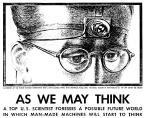 This break opens new wide avenues towards new worlds (Vannevar Bush, 1945).
This break opens new wide avenues towards new worlds (Vannevar Bush, 1945).
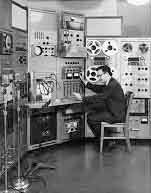
The impressive... and ridiculously powerless in comparison to a 2015 tablet... environment where the musician Lejaren Hiller works around 1960.
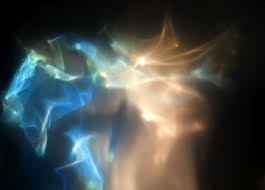
Nevertheless, digital art progresses, for example with the Flowers (1964) by Frank Malina , one of the first computer generated (and generative) on a computer.

Virtuality proper emerges In 1968, with the pioneer headset by Ivan Sutherland. At first essentially for scientific (and military) purposes.
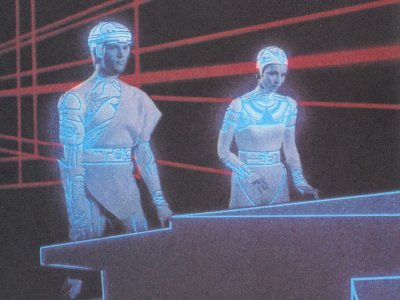
Steven Lisberger: Tron (1982) shows the power of synthesis images in cinema.
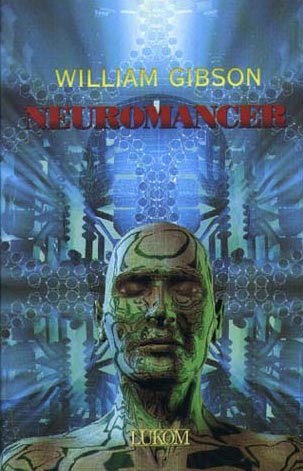
Once again, technology gives ideas to the novelist, for instance William Gibson, with The Neuromancer (1984). Reality dissolves in the cyberworld.
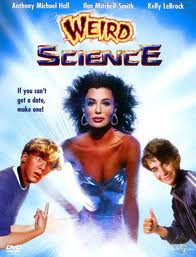
Hughes Weird Science (1984). Virtuality opens the way to a new libido. But cybersex will not fulfill its promise along these lines. It will perhaps ve revived in 2015 by the cheaper new goggles (Le Monde, 4/11/2015).
In the 1990's, VR is really borne, with goggles
VR in the 1980's is really fascinating. The kind of things to arouse a "waw" visiting for instance the Siggraph.
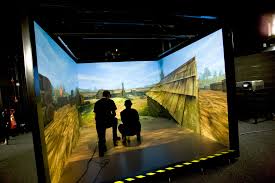
The cave (or IPT, Interactive projection theater) is more appropriate in many cases. It is les cumbersome to use than the goggles, and several persons can share its space.
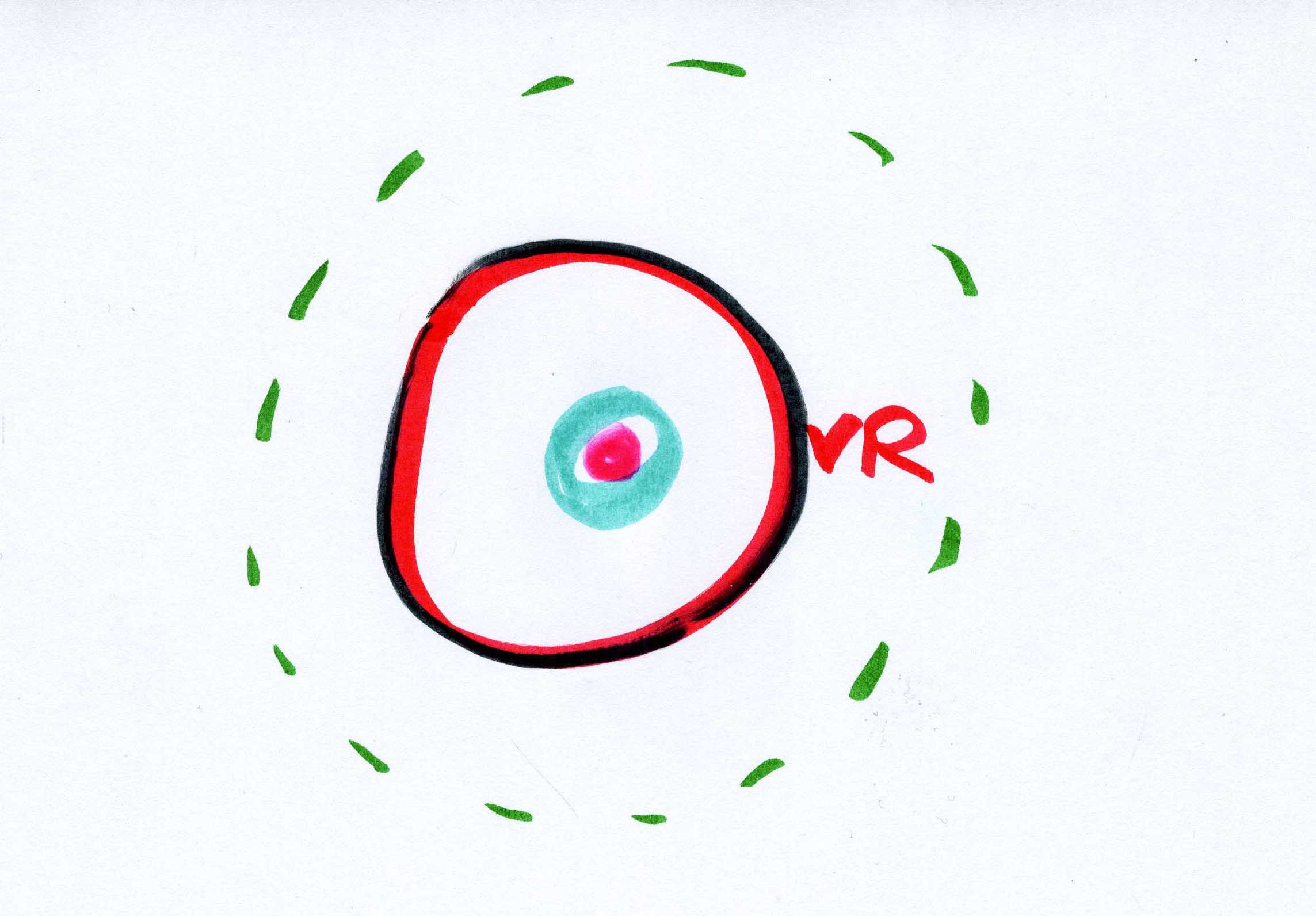
But VR, used through goggles or inside a cave, is fundamentally opaque, then disturbing if not dangerous. Not so many works of art make use of it. But we can quote some examples:
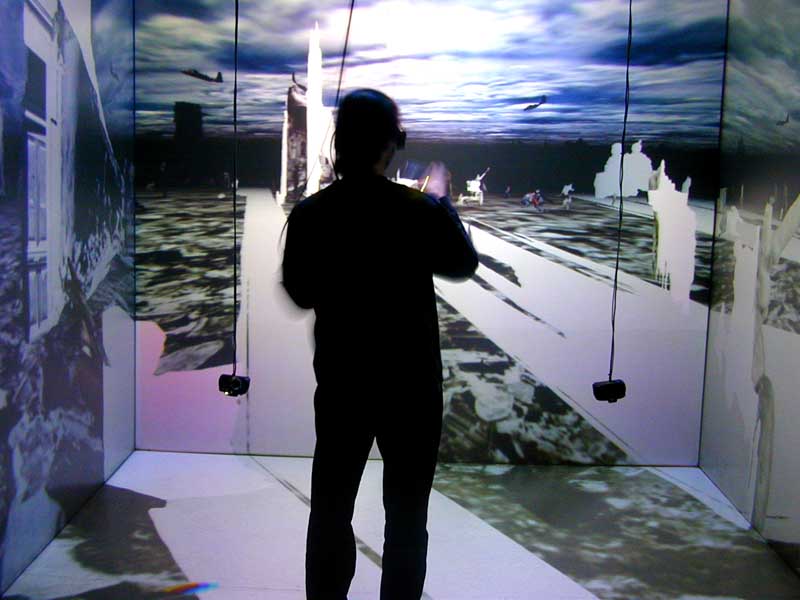
Maurice Benayoun (aka Moben) World Skin (1998), a large and dynamic work.
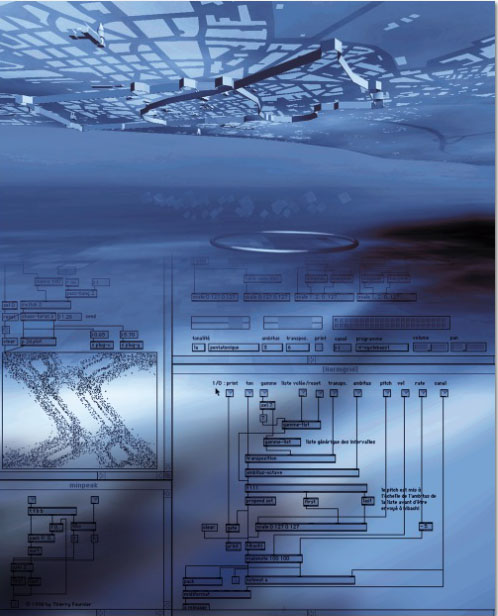
The Nibelungen Treasure (2000), by Olivier Auber, Mâa Berriet and Thierry Fournier, is one of the first large scale application of VR to art : The Nibelungen museum in Ems, with the basement used as a cave, and the town seen from under, to illustrate the legend which is the base of Wagner's tetralogy. Unfortunately, the work has been destroyed in 2012. VR, like anything digital, is prone to destruction, and not easy to maintain in the long run. See an extensive description, and a video captation.
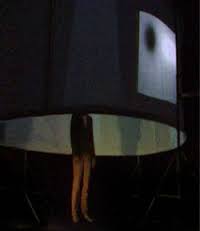
Anne-Sarah Le Meur. Outre Ronde (2003-2012). An extreme application of VR to generativ art. The spectator, in the center of a cylindrical screen wears a headset to communicate its moves to the work. If you want to see the work doing pleasant things, you have to behave calmly and with patience

Thomas Israel : Metracrane (2009) is another example of generative art in VR: the spectator enters a cell, with a dome ceiling, and sees semi-random sequences of the Israel's film library.
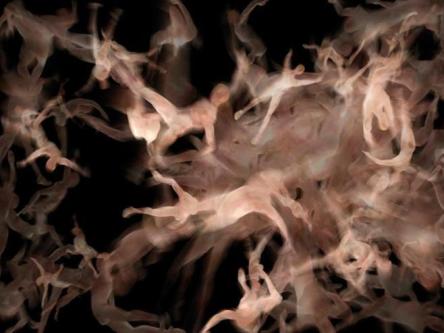
Kurt Hentschlâger : Core (2012) pushes the immersion to its extremes, with strong if not excessive lights (stroboscopy) and sound effects. There is even a risk of seizure for people with heart problems.
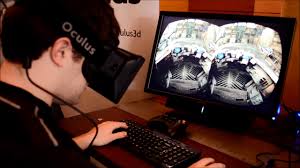
Goggles make a comeback in 2014, witg Oculus Rift...
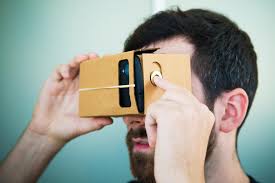
... Google Cardboard and some others. That gives impetus to new artistic research, for example those shown this year in Laval by Judith Guez and her team at University Paris 8

And a star of animation cinema, Glen Keane, for Google (2014) wrote a cute and traditional short, Duet. It's a perfect expression of the wide divide between the cinema industry and the world of (contemporary) art.
VR cuts you from the real. What about AR?
All these works, using various forms of caves rather than goggles, have shown the width of VR. But they testify also on the "closed" facet ot these spaces. By contrast, augmented reality aims to a more balanced presentation of the world as it is and the projections of my mind and the artist's mind through glasses or other techniques.
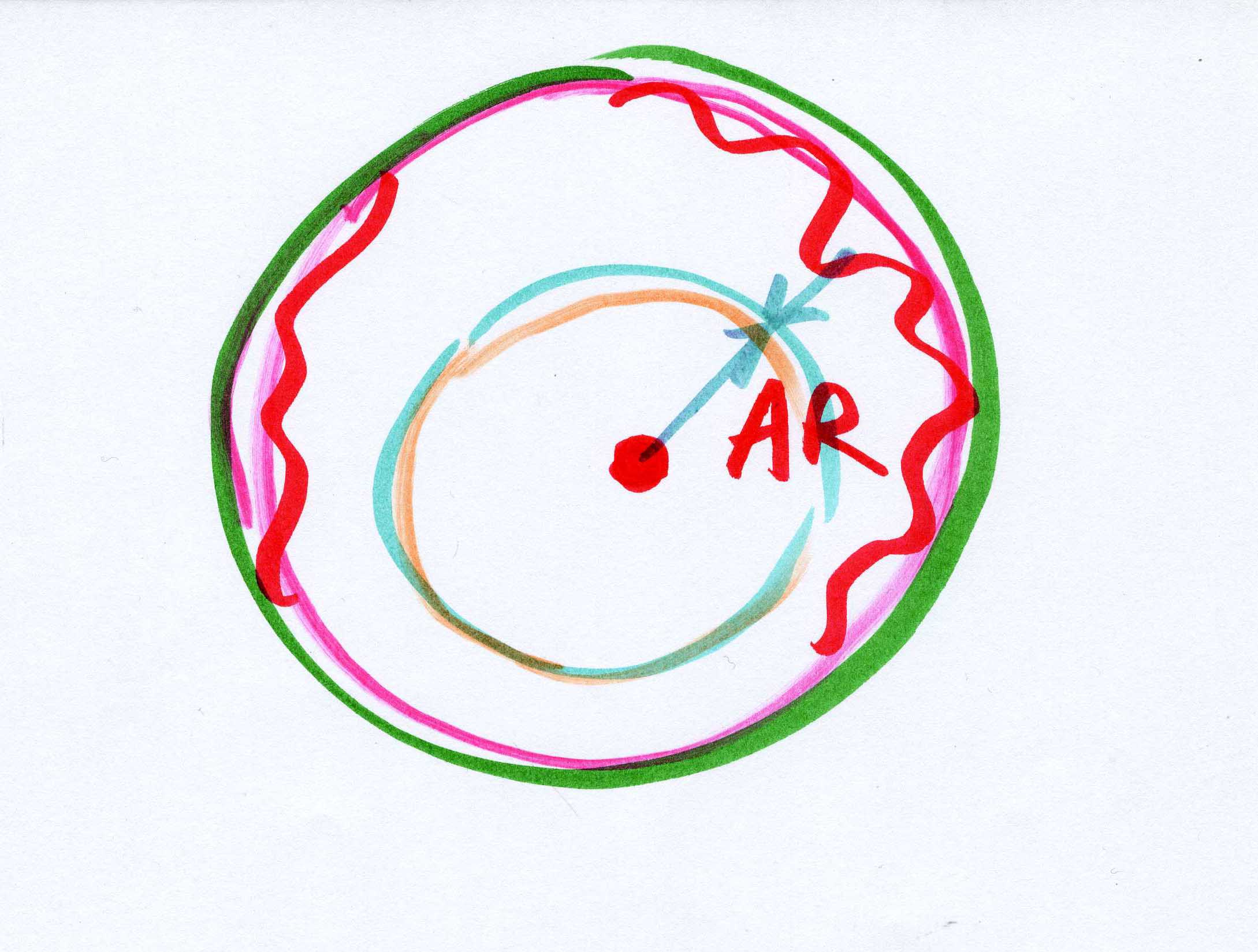

Jeffrey Shaw's Legible city (1989) is an example of an interactive combination of the real action of a cyclist and its moves into a city of large letters.
Another convincing example of augmented reality is the Astrolabe (1991) built by Alain Le Boucher in the industrial city of Val-de-Reuil (near Rouen, France). Its a sculpture in form of a traditional astrolabe to study the movement of stars, with a mock telescope in the center. When you move it towards a point in the sky, a screen shows you the buildings around as they are, but the actual sky is replaced by a sky map.
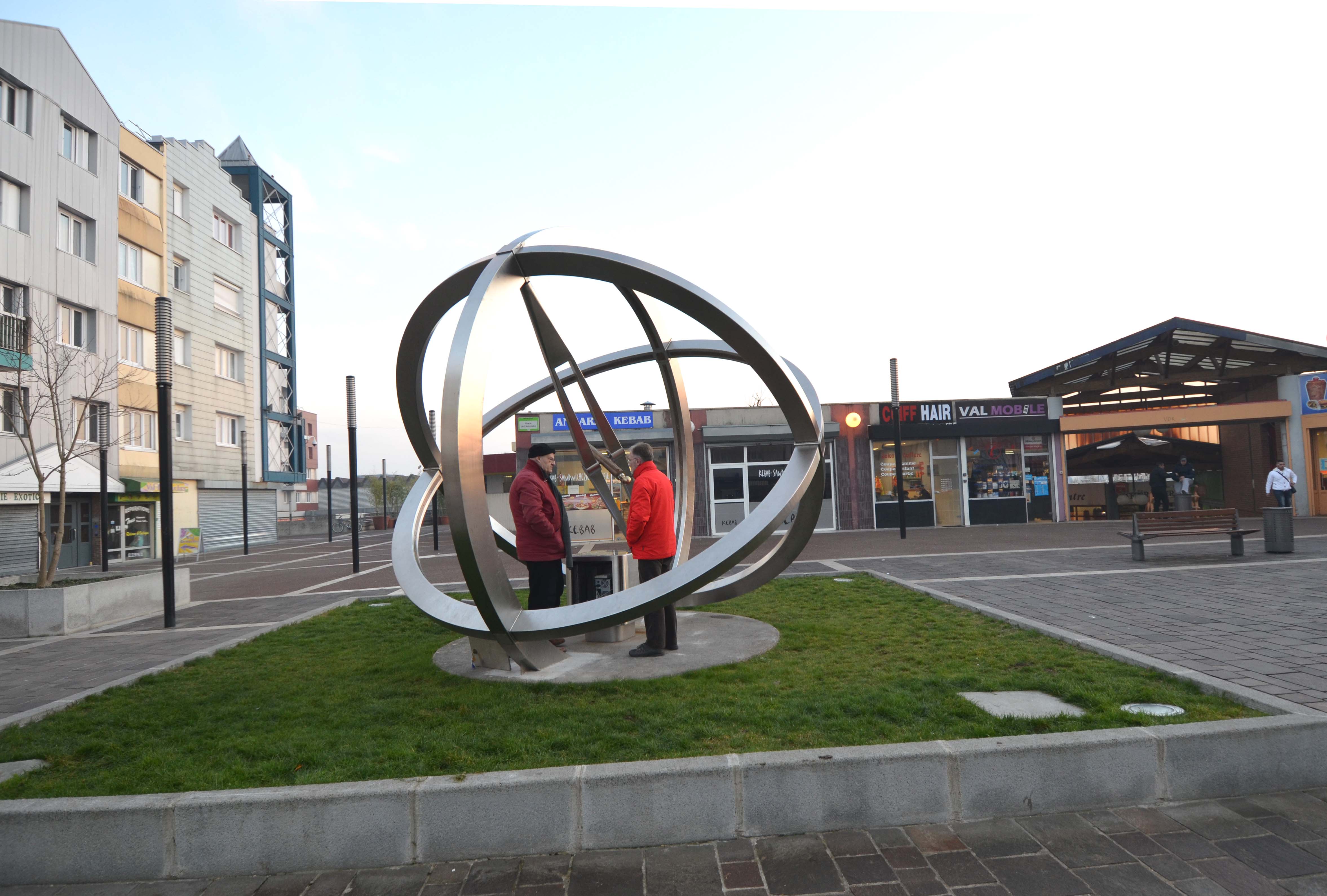
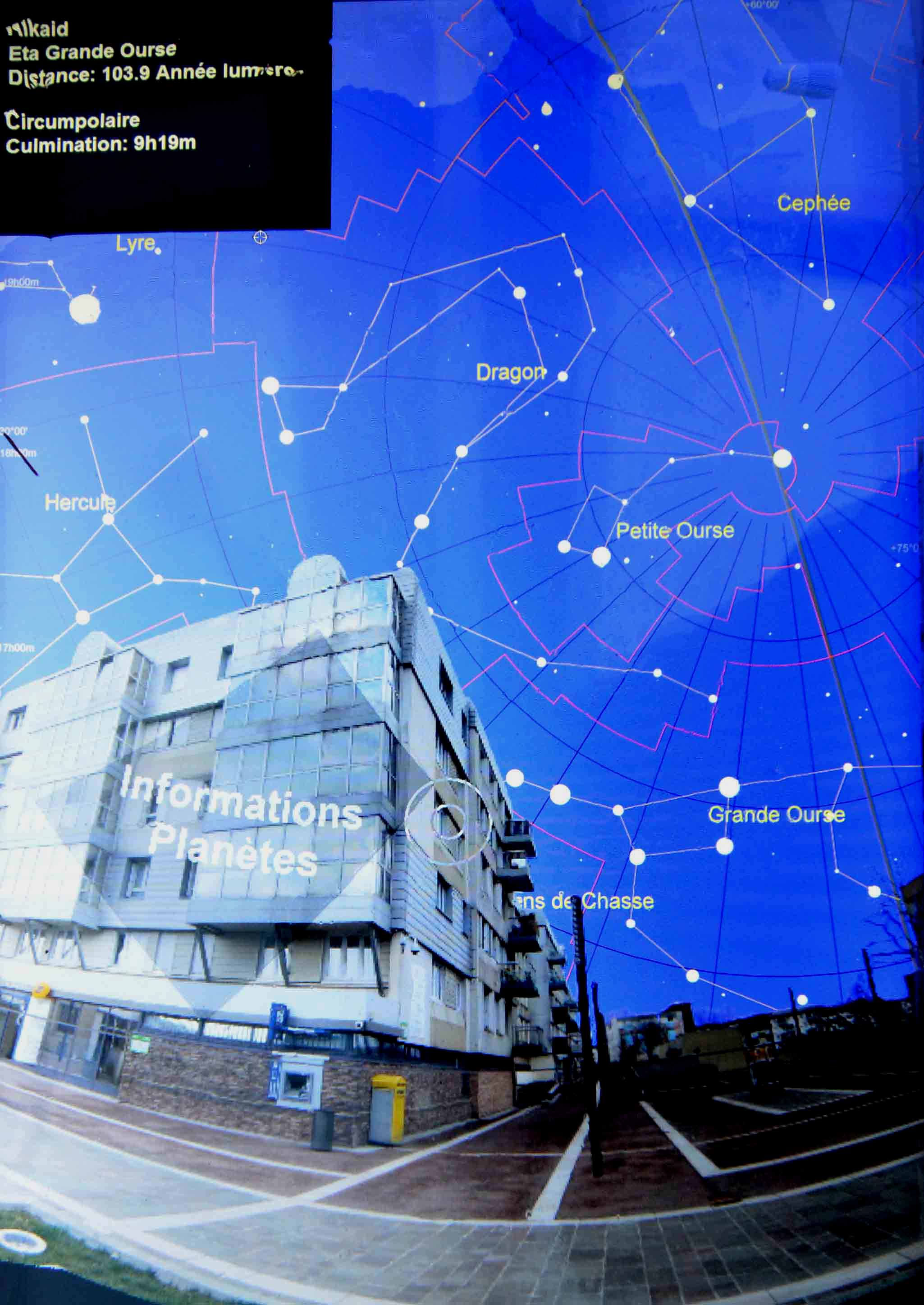
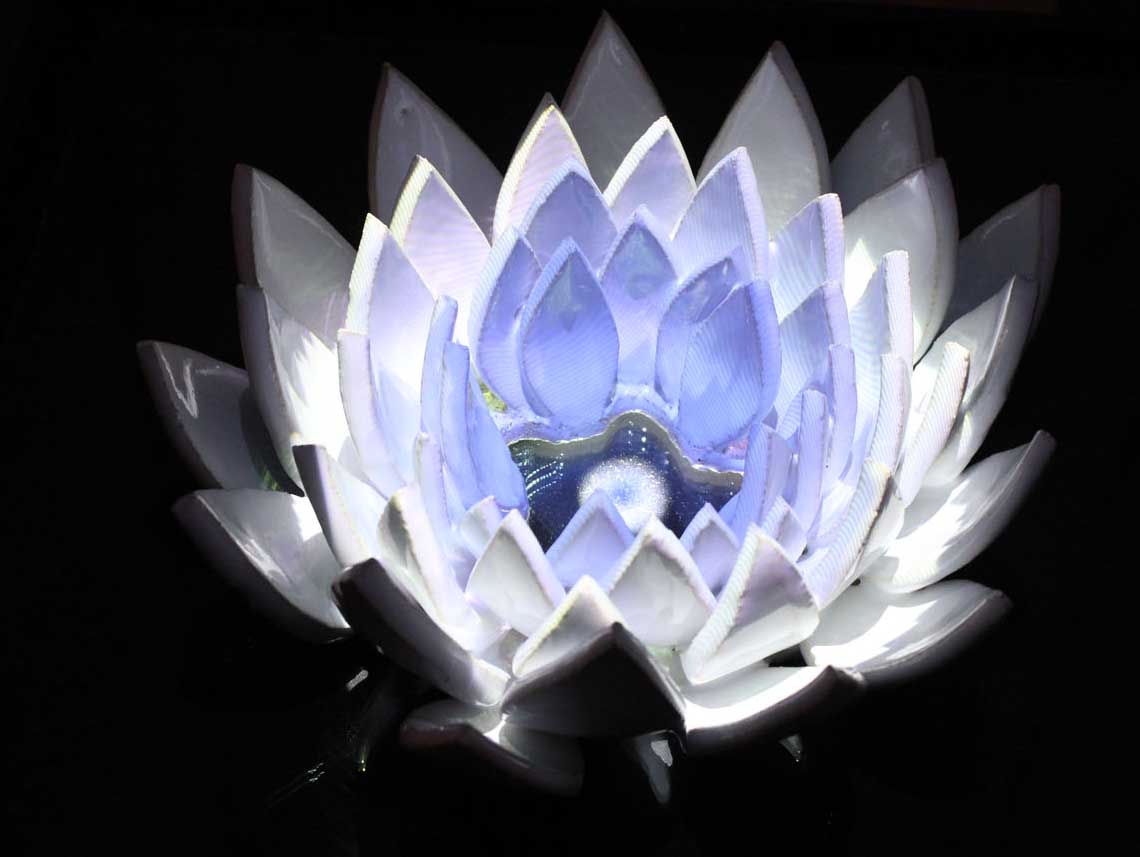
Hugo Verlinde, Lotus, 2013. (Not really AR, just the projection of a generative video on a ceramic sculpture. But I love it.)
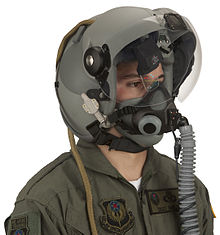
The best augmented reality devices have been made for fighter planes pilots. They are of course very expensive and not available for art.
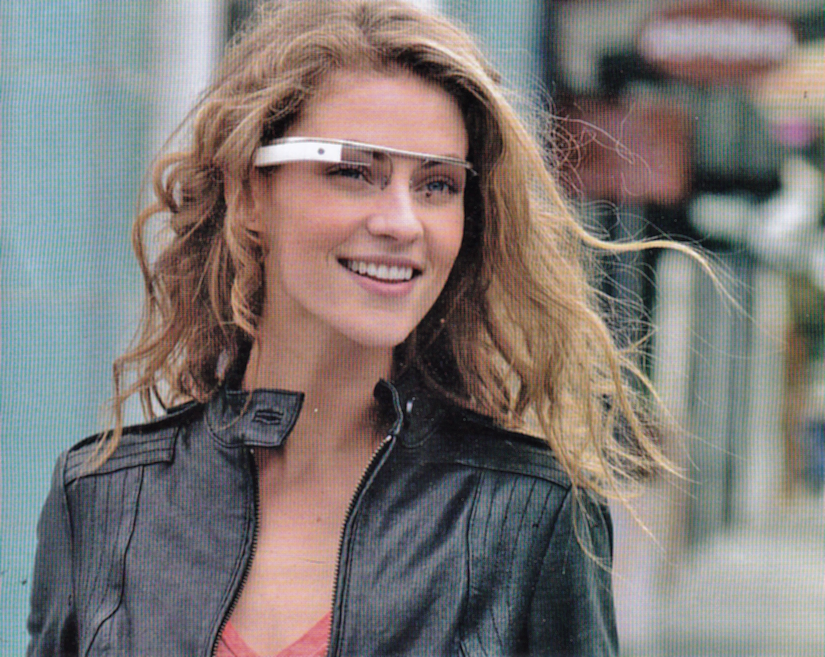
Google Glasses (2012) may be seen as a minimally augmenting device.

But tablets and smartphones are now the best tools for AR. For example, a simple sketch, black and white, can be recognized by a tablet camera, which adds color and more graphics. It is the case of Calameo, by Justine Emard. By the way, this work has been presented in something like an augmented museum, more specifically a mobile museum which in 2014 presented digital art in the public space of several French towns.
The new "spaces"
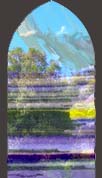
That takes to think about the spaces where we project and augment images. The space can strongly modify the perception of a work. For instance, this image of Mistral (2014), a generative video by Jacques Perconte (using glitch caused by the limits of compression/decompression algorithms) is not very impressive when just looked at on your laptop.
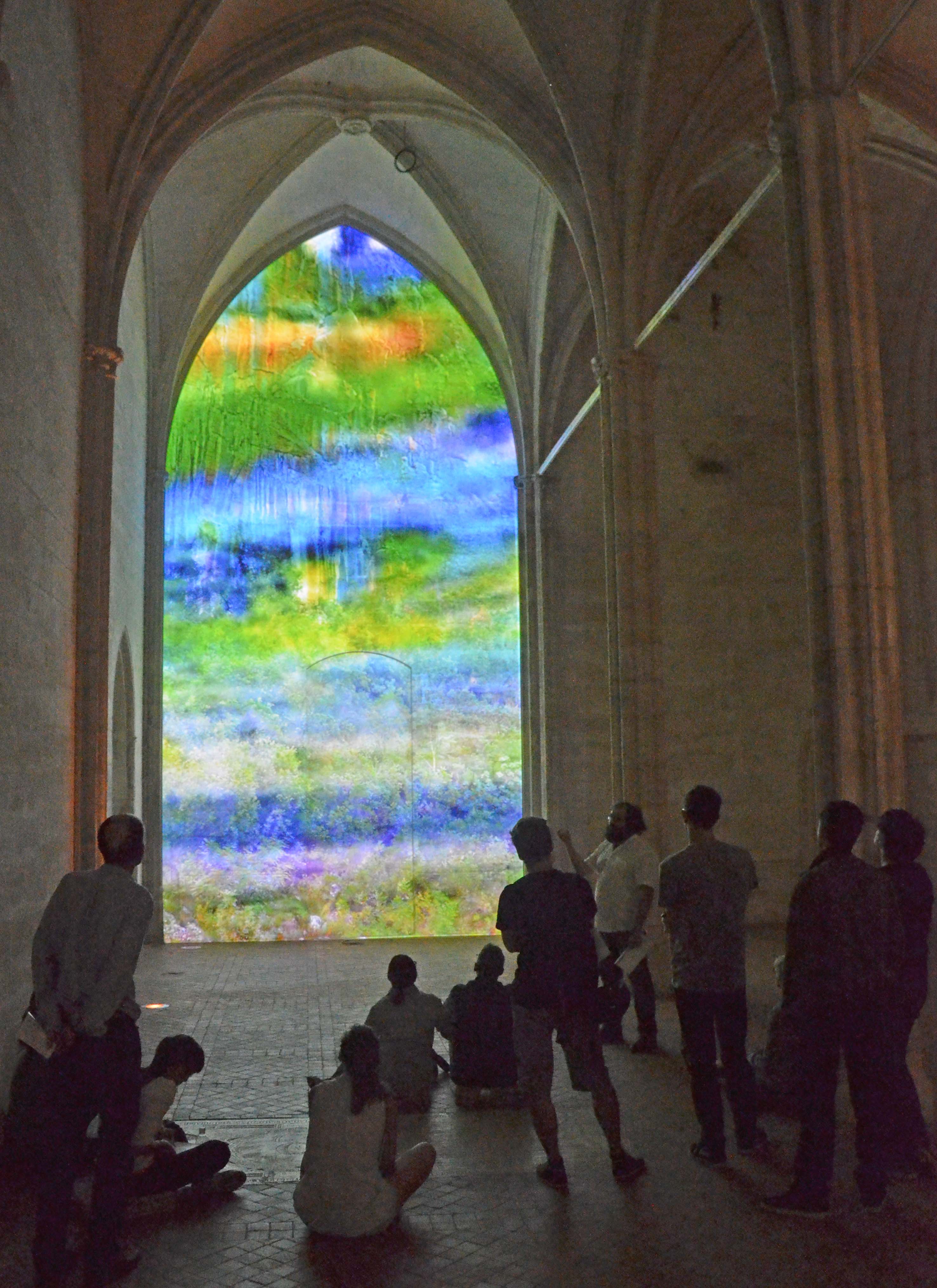
It will take you to higher emotions if you see it projected in the high wall of a church.

But new spaces are more and more "augmented". The car, for instance with radio, GPS....
 Autonomous cars (here the Mercedes F15 concept car, recently presented in Las Vegas) open new opportunities to
internal design and interior decoration. And since the driver has no longer to look outside, and anyway the landscape is most generally boring... why should we not forget the windows, and rather use them as screens...
Autonomous cars (here the Mercedes F15 concept car, recently presented in Las Vegas) open new opportunities to
internal design and interior decoration. And since the driver has no longer to look outside, and anyway the landscape is most generally boring... why should we not forget the windows, and rather use them as screens...

...as for planes (Note the surprising opaque plane in the middle. (Incidentally, why no to place also flat screens on the front and offer a fully panoramic view?).
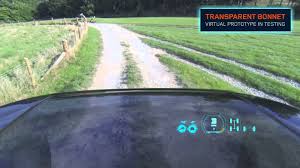 On the other hand, augmented reality may help if you drive in difficult ground. So Land Rover proses their "transparent bonnet" for cross-country cars...
On the other hand, augmented reality may help if you drive in difficult ground. So Land Rover proses their "transparent bonnet" for cross-country cars...
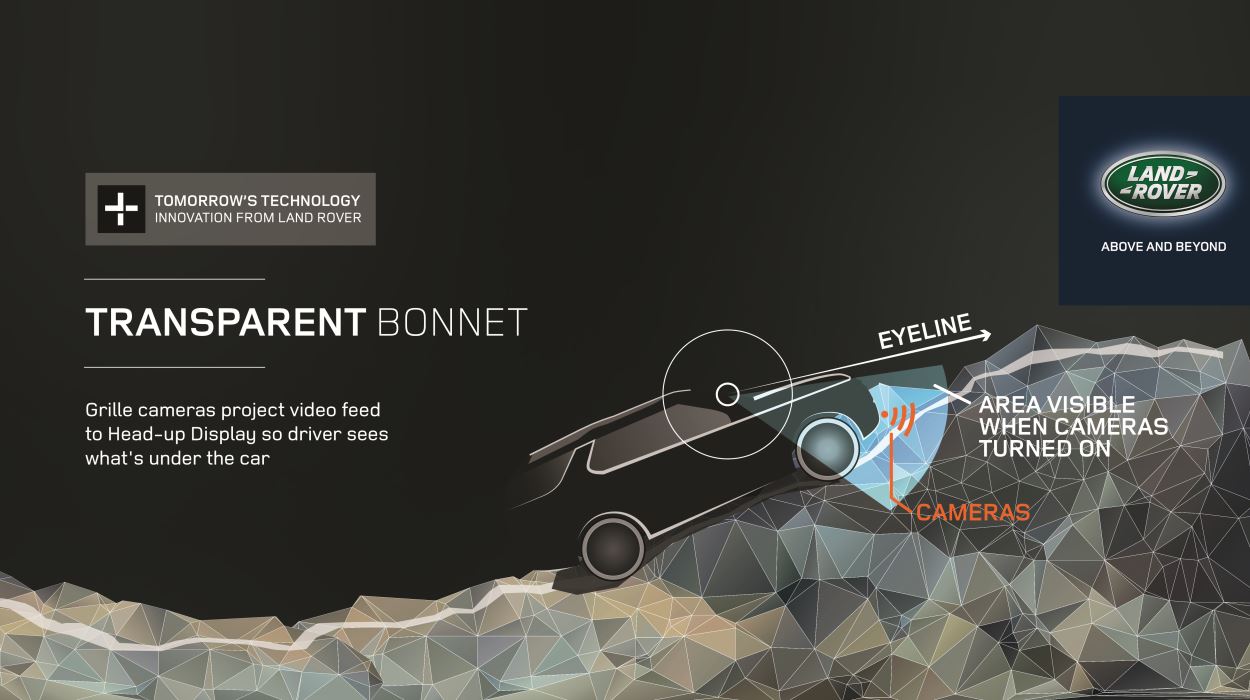
... using cameras placed in front and oriented down. OK; it is not art.

Live performance, such as theater, dance, opera and even circus, is more and more frequently augmented by real time projections. A clever device uses two screens one at the bottom of the stage, one parallel, on the middle of the stage, with projection on a semi_transparent curtain, so you can see actors play in front of as well as behind it. Typical of this trend is Pixel. show by Mourad Merzouki, The Cirque du Soleil is famed worldwide for its special effects. The Dolmens project aims to an in depth study of augmented theater. It stresses a particular form of continuity in a problematic “spectacle machine”, where actors and audience are “mere cogs”.

Sport is another form of art, and the reality of the field is widely augmented for broadcast, with a lot of comments and editing.

Underground train stations, in Paris or Barcelona, use now a lighting by LEDs, not only for ecological reasons but also for new artistic possibilities, since LED's bring easily color and variation.

Commercial malls offer even more interesting possibilities of augmentation, due to better funding and an environment interactive by nature, with a transgenerational public. We have a beautiful example in the Qwartz, North of Paris. Digital art was from start included in its design, with ten interactive works scattered in the mall, and one of them monumental, in the main hall.
Even full town districts tend to become "augmented". A large part of Paris-la-Defense esplanade also is digitally lit at night. And Lyon Confluene new district has been thought from start with digital minds.
The spaces devoted to art, like galleries tend also to augment their visibility with new technologies. Galerie Charlot, in Paris, used a special glass for its shop window, in order to show its digital works directly in the street.


Between I and the World... a "cloud"?
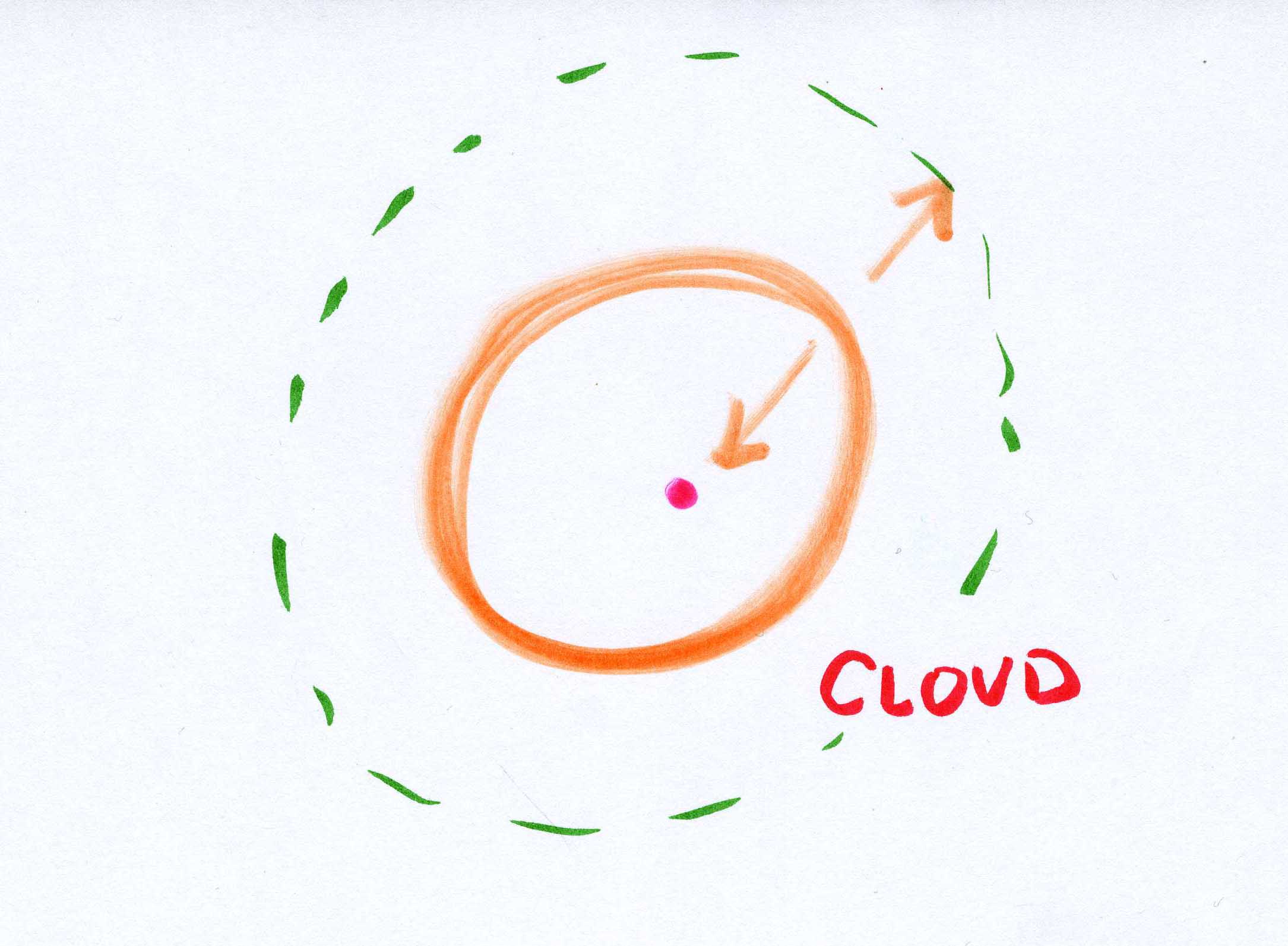 Finally, virtual reality and augmented reality are merging into a continuous sphere between us and the worls, with variable transparency.
Finally, virtual reality and augmented reality are merging into a continuous sphere between us and the worls, with variable transparency.
Let's call it a "cloud", even if this is quite pulling the leg of this trendy word.
This cloud is not a prosthesis we control fully, which is at the service of our will and good only.
Actually, this virtual/augmented reality
- hosts a lot of more or less autonomous "beings",
- which are highly connected, and will more and more communicate more easily between themselves than with humans,
- is driven by powerful actors, the most important being Google,..
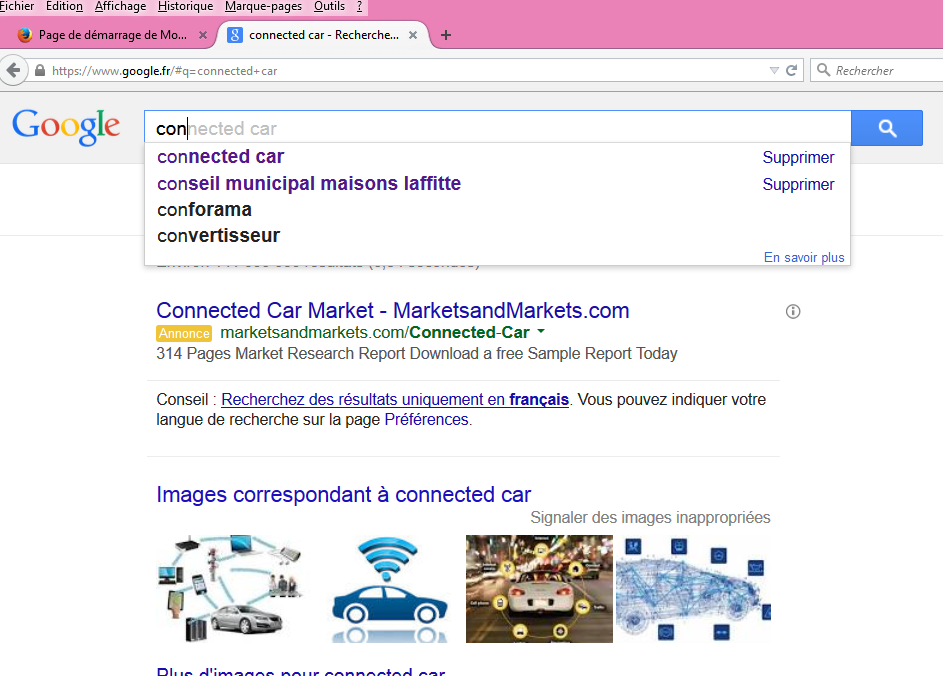
...who "augments" (autocompletion) the requests of its visitors in ways that are, at the same time, quite efficient and useful and generally pleasant... but which are also promoting the profit of the real customers of Google: their advertisers. See for example this screen copy of a request I did some days ago. I was working on "connected car". As soon as I had type the three first letters, Google guessed correctly what I was looking for, but added another of my work domains, plus a local furniture seller, and a fourth term for an unknown (by me) reason.
Dont't forget, by the way. That the cloud and the connected objects are vulnerable to hackers of every kind, from crooks to terrorits to State agencies.
So, we are both "driver" and "driven" by our browsers, operating systems and all digital tols. It will also be the case with automated cars, which will adapt their/our routes to traffic conditions but also to law, police demands and why not commercial actors.
Will the world of tomorrow look more like an amusement park than like the real game of life by responsible actors? But let's not be too negative, and enjoy the good sizes of it, and appreciate the contribution of AR and VR, as Mark Mine (Walt Disney International) has shown on the Laval's morning session.
Then it may be reassuring to think that new art and research on VR and AR deals with emotion, as show two complex and humanist projects presented this afternoon :

- the Living Joconde, led by Jean-Claude Heudin (DevinciMedia Lab), with Florent Aziosmanoff as a major partner,
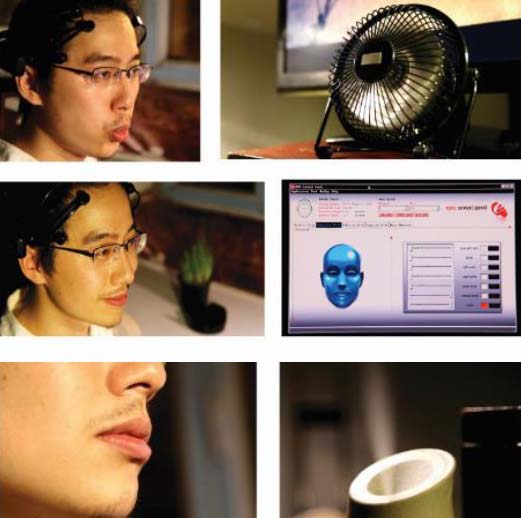
- the research of Yiyuan Huang (Paris 8) : "Creation methodology of interactive art installation based on philosophy-understanding projection. Recreation of traditional Chine painting".
Then we can keep some optimism, and I'll conclude here with a short poem :
I feel the Bit beating in my heart
No meaning but power.
I see the Cloud whirling high overhead
Calling us for an answer.
I share the Life, this growing spread.
The World we build together.
Build together? That calls for new creation processes. See the following part of our presentation.